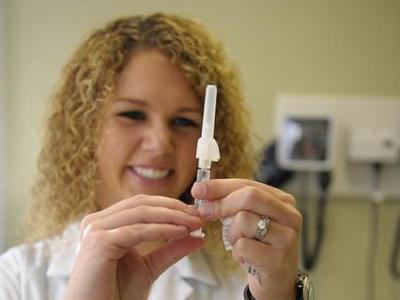Our weekly wrap-up of antimicrobial stewardship & antimicrobial resistance scans
Study shows rising use of ceftazidime-avibactam for CRE infections
Originally published by CIDRAP News Nov 24
A large study of patients in Veterans Administration (VA) hospitals shows a significant increase in the use of ceftazidime-avibactam for carbapenem-resistant Enterobacterales (CRE) infections, US researchers reported today in Infection Control & Hospital Epidemiology.
Cefazidime-avibactam was approved by the Food and Drug Administration in 2015 and is now considered a primary option for CRE infections by the Infectious Diseases Society of America. To date, however, there have been no large national studies to evaluate prescribing trends in patients with confirmed CRE infections, who traditionally have been treated with polymyxins and the aminoglycoside antibiotic tigecycline.
The cross-sectional study of patients treated at 134 VA facilities from 2012 through 2018 identified 7,767 patients with positive CRE cultures, 65% of whom met the definition of receiving antibiotic treatment and were included in the cohort. Urine cultures were the major source (51.7%) of CRE, followed by respiratory (20.1%), blood (13.7%), and other cultures (14.5%). The frequency of bloodstream infection (BSI) CRE isolates increased over time, and the condition was more likely to be found in Black and Latino patients.
In patients with BSI and non-BSI CRE cultures, use of ceftazidime-avibactam increased significantly over time (by 154.0% and 433.0%, respectively), as did use of extended-spectrum cephalosporins (385.5% and 111.1%), while use of aminoglycosides (58.0% and 49.0%) and polymyxins (72.6% and 79.7%) fell significantly. In 2018, 54.1% of CRE BSI patients and 22.7% of CRE non-BSI patients received ceftazidime-avibactam.
"This large national cohort study of veterans with CRE showed an encouraging trend toward increased uptake and utilization of ceftazidime–avibactam for CRE, with decreased utilization of 'older' agents such as aminoglycosides and polymyxins," they write. "Future studies will need to assess uptake and utilization of other, more recently approved antibiotics targeting multidrug-resistant gram-negative bacteria."
Nov 24 Infect Control Hosp Epidemiol abstract
Antibiotic spectrum index could boost antibiotic stewardship in NICUs
Originally published by CIDRAP News Nov 23
Use of an antibiotic spectrum index (ASI) helped identify patterns of empiric antibiotic prescribing at three neonatal intensive care units (NICUs) and could help guide stewardship efforts, US researchers reported today in Infection Control & Hospital Epidemiology.
Using antibiotic data from the pharmacy systems of three academic level 4 NICUs, the researchers collected the ASI per antibiotic days and the days of therapy (DOT) per patient days for all very-low-birthweight (VLBW) infants, who are at high-risk of exposure to broad-spectrum antibiotics because they require prolonged hospitalization and are at high risk of infection. The ASI was developed to compare antibiotic selection patterns by the spectrum of antimicrobial action and capture important differences in prescribing patterns.
While DOT quantifies the duration of antibiotic treatment, the study authors note that it treats all antibiotic exposure equally, regardless of the spectrum of the antibiotic. Understanding the spectrum of antibiotics being used in NICUs is important because use of broad-spectrum drugs may do more damage to infant microbiomes, and can increase the risk of invasive fungal infections.
Demographics were similar for the 734 VLBW infants included in the analysis, which found that the NICU with the highest DOT per patient days had the lowest ASI per antibiotic days and the site with the highest mortality and infection rates had the highest ASI per antibiotic days. Antibiotic utilization varied by NICU, particularly for choice of broad-spectrum coverage, although the organisms causing infection (coagulase-negative Staphylococci, Escherichia coli, and methicillin-sensitive Staphylococcus aureus) were similar—a find the authors say suggests patterns of antibiotic usage are driven largely by local empiric antibiotic prescribing practices, rather than identified organisms.
"This study provides evidence for the utility of the ASI in comparisons of similar NICUs with different practices and can guide stewardship initiatives to reduce the use of broad-spectrum antibiotics," the authors write.
Nov 23 Infect Control Hosp Epidemiol abstract














